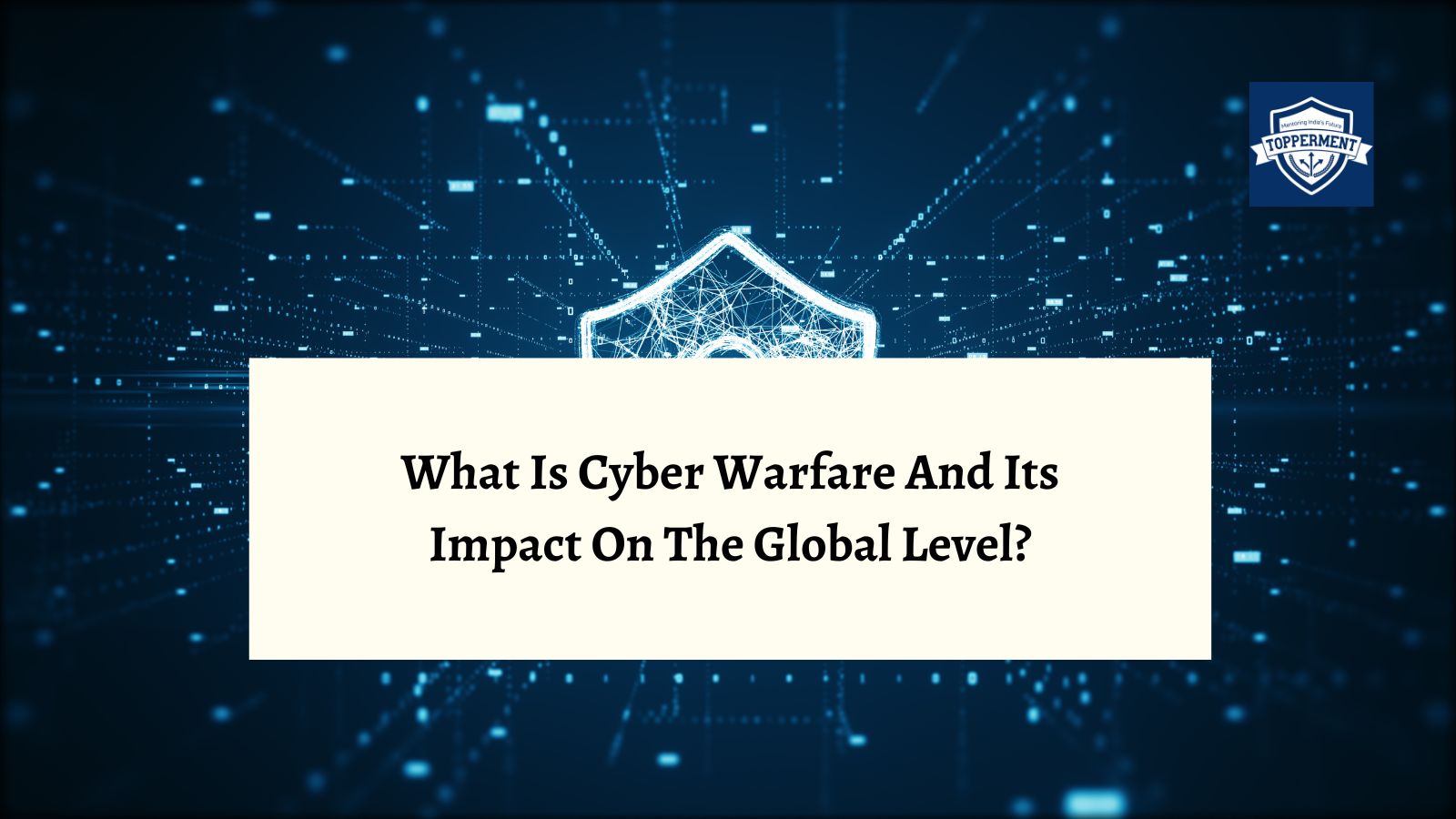
Cyber Warfare: The Modern Battlefield | UPSC Science and Technology
In the modern era, the battlefield is not limited to the physical world alone. With the growth of the internet and technology, cyber warfare has emerged as a significant threat to national security. Cyber warfare refers to the use of digital attacks to disrupt or damage the operations of a country or organization.
Types of Cyber Attacks:
- Malware Attacks: Malware is malicious software designed to disrupt or damage computer systems. Examples include viruses, Trojans, and ransomware.
- Denial-of-Service Attacks: This type of attack floods a network or website with traffic, making it impossible for users to access it.
- Phishing Attacks: Phishing involves sending fraudulent emails or messages to trick users into giving away sensitive information like passwords and credit card details.
- Advanced Persistent Threats: These are long-term attacks aimed at stealing sensitive information or disrupting operations.
Targets of Cyber Warfare:
- Governments: Cyber warfare can be used to target a country’s government, including critical infrastructure like power grids and water systems.
- Military: Cyber warfare can target military installations and weapon systems, as well as disrupt communication channels.
- Corporations: Cyber attacks can target businesses and corporations, stealing sensitive information like financial records, trade secrets, and intellectual property.
Impact of Cyber Warfare:
- Economic Damage: Cyber attacks can cause significant economic damage by disrupting trade and commerce, stealing valuable data, and damaging a company’s reputation.
- National Security Threat: Cyber warfare can pose a threat to national security, by targeting critical infrastructure like power grids and communication networks.
- Social and Political Instability: Cyber attacks can also be used to spread propaganda, manipulate public opinion, and influence elections, leading to social and political instability.
Prevention and Mitigation:
- Strong Cybersecurity Measures: This includes using strong passwords, regular software updates, and antivirus software to protect against cyber attacks.
- Education and Training: Educating employees on safe computing practices and raising awareness of the risks of cyber attacks can help prevent attacks.
- International Cooperation: Countries can work together to share intelligence and resources to prevent and mitigate cyber attacks.
Cyber warfare has emerged as a significant threat to national security, with the potential to cause significant economic damage, pose a threat to national security, and lead to social and political instability. Preventing and mitigating cyber attacks requires strong cybersecurity measures, education and training, and international cooperation.
Also Read
- GST Council of India: India’s Unified Tax Authority | UPSC Polity
- What Is The Role Of Election Commission Of India(ECI)? | UPSC Polity
Follow Us For More Content On:
https://www.instagram.com/topperment/
Tag:cyber attack, Cyber Attacks, cyber crime, Cyber Security, cyber war, Cyber Warfare, cyber warfare attacks, cyber warfare definition, cyber warfare explained, cyber warfare in cyber security, cyber warfare meaning, education, future warfare, IAS, IFS, India, IPS, IRS, Science and Technology, Training, UPSC, Warfare



